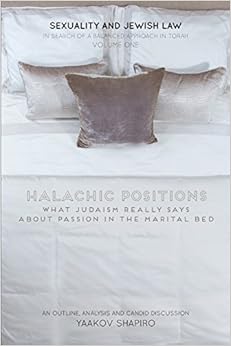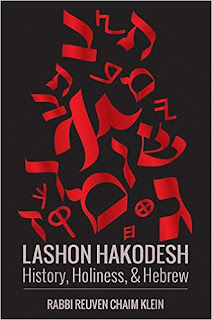Sexuality and Jewish Law
Yaakov Shapiro
430 pages
In his Sexuality and Jewish Law, Yaakov Shapiro, an ordained
rabbi and non-conformist Lubavitcher chassid, offers a thorough, unapologetic,
and uncensored presentation of everything relating to sexual activity and
Jewish law.
All rabbinic texts that deal with sexual matters are cited along
with the interpretations and comments of all the relevant rishonim, achronim,
and poskim. There is also a full presentation of the various halachic opinions
and resolutions to the contradictions between them. The exhaustive endnotes are
essentially an additional book in their own right.
While the book is extremely well researched and impressive
in its scope, the author clearly has an agenda and bone to pick. As he writes in
the introduction, the book was born out of a bad experience and frustrations with
what he was being taught in chattan classes and the “one-sided” approach to
the laws of intimacy. The author seeks to put an end to the strain, fear, and
anxiety that is characteristic in orthodox male sexuality in general, and marriage in particular. Every sexual act and issue
imaginable is addressed in the book along with the various opinions among the
authorities as to its permissibility. The book’s conclusion is that, ultimately,
there is nothing that is truly forbidden in the bedroom from the perspective of
strict halacha.
Sexuality and Jewish Law serves as a valuable resource and
collection of rabbinic sources throughout the ages on everything relating to intimacy.
While I recommend this book for both the scholarly and the curious, I advise
keeping the book out of reach from your teenage children (contrary to the author’s
suggestion). There is certainly much material that will be of benefit to many
in the orthodox community which will help put an end to sexual anxiety and related
religious pressures. But make no mistake, the book is controversial, if not explosive. There are no rabbinic endorsements ("haskamas").
It was only a few weeks prior to this book coming to my
attention that I had begun preliminary discussions with a prominent Jewish
publisher on writing a book of this kind. With this discovery of this book, I
no longer have to. Although not written in the manner or linguistic style that
I would have chosen, the book simply covers it all. The author makes mention of
a second volume in the series, but with what has been covered in this volume, I
cannot imagine what is left for a second volume.


